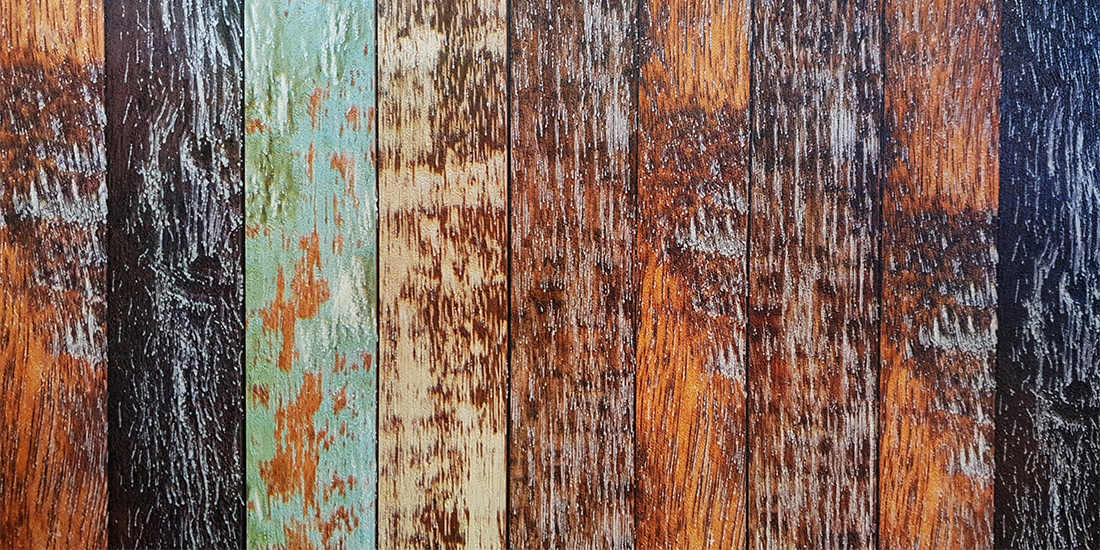
Q: I’m considering building a wood mantel for my fireplace and a few matching furniture pieces to go with it. I’ve been very impressed with photos of salvaged wood in remodel projects, but I don’t know much about it. Is it worth hunting down? Or can I get the same effect with new wood?
A: If you open any magazine, watch any DIY design show, or spend 15 minutes on Pinterest, you will see that salvaged or reclaimed wood is a hot design feature. Naturally, being inundated with pictures of beautiful reclaimed lumber walls, furniture, beams, and floors can inspire anyone to spice up their space. However, terms like salvaged lumber, reclaimed materials, and barnwood can be overwhelming to newcomers. So let’s take a brief introductory tour of reclaimed wood:
The first question a lot of people ask is if reclaimed lumber in salvage yards is essentially the same as lumber at Home Depot. And my answer is always the same: absolutely not.
So, what is reclaimed lumber? It’s high-quality wood removed from structures like barns, warehouses, homes, etc., for repurposing. This material typically comes from old-growth forests rather than forests planted with genetically selected fast-growing seeds. If you compare an end cut of a two-by-four sold at a modern lumber yard to a reclaimed two-by-four end cut, you quickly notice a big difference: growth rings. The growth a tree experiences in a year is measured by rings per inch. A newly harvested fast-growth tree will have just a few growth rings per inch, versus up to 200 growth rings in a single inch of old-growth. The tighter the growth ring, the stronger and harder the wood.
Farmed trees are harvested at an average age of 65 years, while old-growth trees can be several hundred years old and air-dried for more than 60 years. Since the lumber has dried slowly, it has had time to warp, crack, or check so you know the material is incredibly stable and you can depend on reclaimed lumber’s strength and durability for any project you pursue.
Reclaimed lumber has the beautiful wear and patina of its previous life, which may include discoloration due to oxidation, nail staining from its original application, or original saw blade patterns—these “blemishes” add rich, lived-in character. Reclaimed lumber is sustainable and eco-friendly because it’s recycled; newer trees are not being harvested for your project. A neat bonus feature of reclaimed lumber is that if you purchase it from a salvage yard or directly from the source, you can even learn its amazing history.
When using reclaimed lumber in a project, it is important to note that it is typically considered a furniture-grade material, meaning it’s perfect for furniture, wood accent walls, cladding (wrapping an item with a material), fireplace mantels, shelving, countertops, and more. Timber framers, craftsmen, and furniture makers love using old-growth beams and lumber in projects due to the structural stability of the wood. You can even use it as a main support beam in your home or building. Just make sure to check code requirements first.
By using reclaimed lumber in your project, you will not only achieve a warm, rich, earthy feel. You will know the material is high-quality, locally sourced, and has a long history. And by reusing old lumber, you will save new trees from being harvested. Now take those eye-catching inspirational images, head to your local salvage yard, Craigslist, or a friend’s remodel, and start building your perfect statement piece today!
Lacy Kabrich is the marketing and sales director of Earthwise Architectural Salvage, a member of the Master Builders Association of King and Snohomish Counties (MBAKS). If you have a home improvement, remodeling, or residential homebuilding question you’d like answered by one of MBAKS’ nearly 2,800 members, write to homework@mbaks.com.